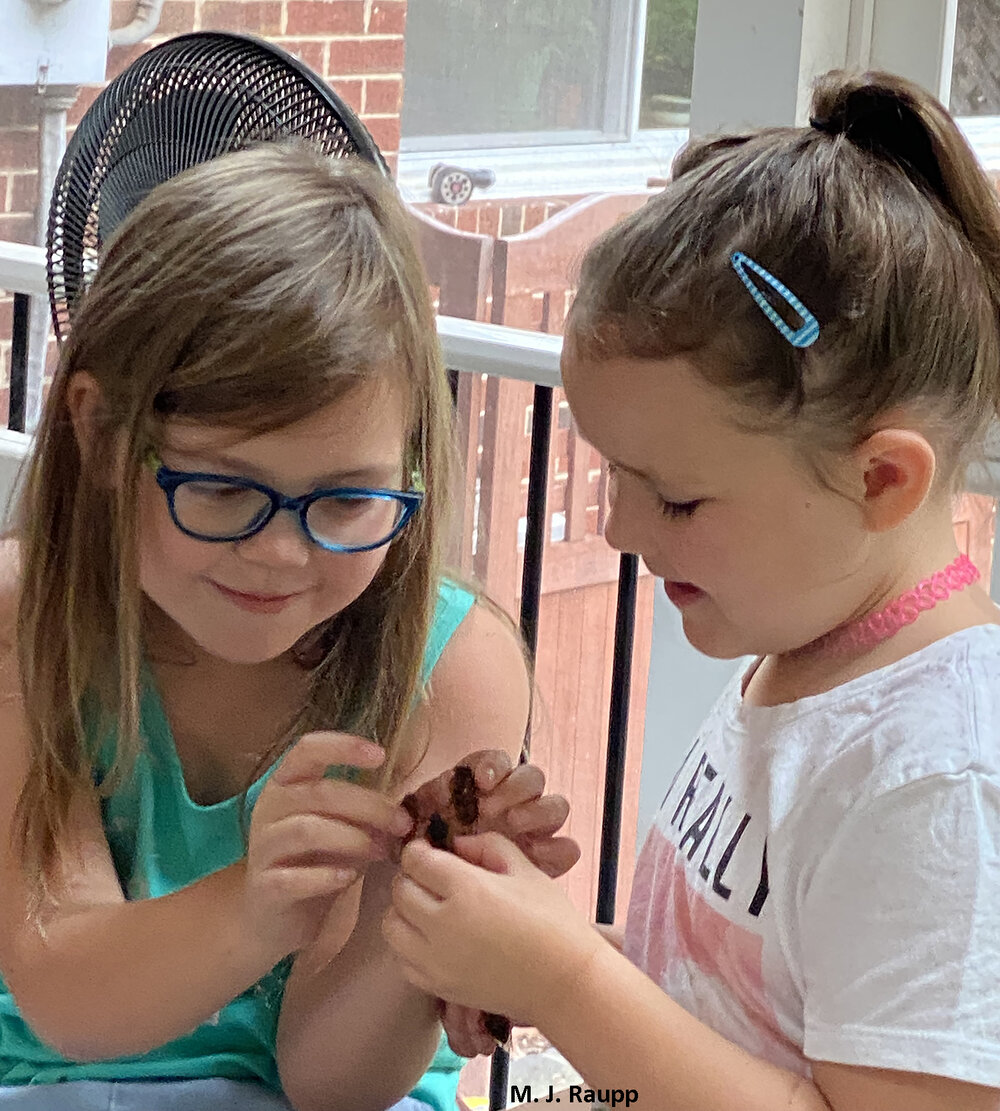Auf wiedersehen Brood X: Cicadas, Magicicada spp.

For millions of youngsters and not-so-youngsters, periodical cicadas are a source of fascination and fun, a chance to learn about the wonders of insects and the natural world.

Over the last three months, we explored the ecology, behavior, and interactions of Brood X periodical cicadas with humans, other animals, and plants in the eastern United States. We visited cicadas underground, watched the emergence of cicada nymphs from their subterranean crypts, discovered how male cicadas make noisy and ethereal sounds, learned how to tell the boys from the girls, watched as hungry predators enjoyed the cicada bounty, witnessed mating and oviposition by females, shuddered at their lethal STD, and witnessed havoc wrought upon young trees when females laid their eggs. In the waning weeks of June here in the DMV at locations that had formerly been zones of rollicking cicada choruses a few weeks ago, there is now an eerie silence. The reason for the hush is immediately apparent. Beneath trees and shrubs, the ground is littered with thousands of spent exuviae, the shed skins of cicada nymphs, and the bodies of adult cicadas that survived the onslaught of hungry sparrows, blue jays, hawks, mocking birds, foxes, raccoons, squirrels, dogs, and dozens of other predators. Also scattered about are wings and fragmented body parts of cicadas that were not so lucky. Macabre half cicadas with abdomens transformed into fungal fruiting bodies litter the ground, victims of Massaspora. Hungry ants and maggots repurpose cicada protein and return it to the food web. Along neighborhood roadways and sidewalks greasy black patches mark the spots where cicadas found their final resting place beneath the tires of vehicles or shoes of humans.
What other legacies did cicadas leave behind? For the natural world they provided a bounty for countless predators. This year, birds produced larger clutches more frequently and nestlings were heavier and enjoyed greater survival (Anderson 1977, Strehl and White 1986). As cicadas return to the earth upon death, decomposition of their remains creates a pulse of nutrients to the forest floor boosting microbial biomass, adding nutrients, and enhancing the growth and reproduction of understory plants (Yang 2004). Similar changes in microbial communities occur when cicadas enter streams (Menninger et al. 2008). Young trees took a beating when female cicadas laid eggs in small branches but trees protected by cicada netting were largely spared from this injury (Ahern et al. 2005). Although established mature trees experienced cicada injury, they are able to shrug off this insult in the long run (Clay et al. 2009).
As the door closes on Brood X in 2021, cicadas leave behind billions of holes to aerate the soil, a feast for necrophagous creatures like tiny hungry ants, oily spots along roads where cars were the grim reaper, sidewalks littered with shells and carcasses, and tons of shed skins and decaying bodies that return nutrients to the soil. A solitary late comer to the party wanders amongst earthly remains of its brood mates. Auf wiedersehen Brood X, until next time in 2038.
For cicadaphiles, this was a season to enjoy a truly remarkable event that happens nowhere else on earth except in the eastern Unites States, only a handful of times in a lifetime. Cicada lovers from as far away as California planned family vacations to enjoy the emergence of Brood X while cicadaphobes tried to cope with the immensity of the event in various ways. Some strove to understand cicadas better and were counseled on how to cope with these red-eyed critters, while others planned a cicada escape. One friend had plane tickets at the ready and when warned that emergence was just around the corner, he departed for a cicada escape to Idaho. For Bug of the Week, it was a welcome break from COVID and other strange events of the past year and a fine time to share a few bug stories. Here in the DMV cicadas had a spectacular run and the teenage offspring of Brood X, 2021 will return in 2038 for their day in the sun.
Acknowledgements
Bug of the Week thanks members of the Cicada Crew, journalists of print and non-print media, neighbors of the Allview community in Columbia, MD, and cicada geniuses that devote their professional careers to studying these strange, whacky, and mysterious insects, who all assisted in the telling of cicada stories. The following references were used to prepare this episode: “Reproductive responses of sparrows to a superabundant food supply” by T. R. Anderson, “Effects of superabundant food on breeding success and behavior of the red-winged blackbird” by C. E. Strehl and J. White, “Periodical cicadas as resource pulses in North American forests” by L. H. Yang, “Periodical cicada detritus impacts stream ecosystem metabolism” by Holly L. Menninger, Margaret A. Palmer, Laura S. Craig, and David C. Richardson,“Effects of oviposition by periodical cicadas on tree growth” by Keith Clay, Angela L. Shelton, and Chuck Winkle, and “Comparison of exclusion and imidacloprid for reduction of oviposition damage to young trees by periodical cicadas (Hemiptera: Cicadidae)” by R. G. Ahern, S. D. Frank and M. J. Raupp.
This post appeared first on Bug of the Week